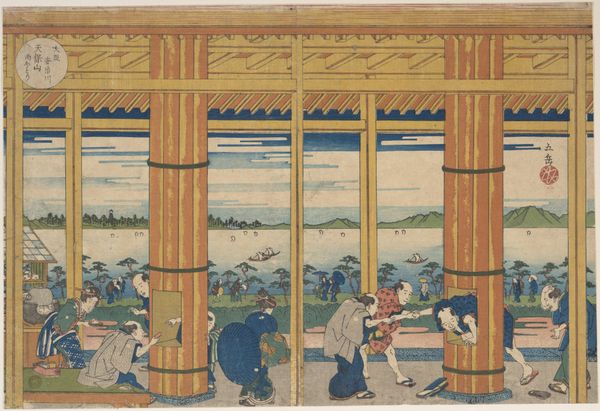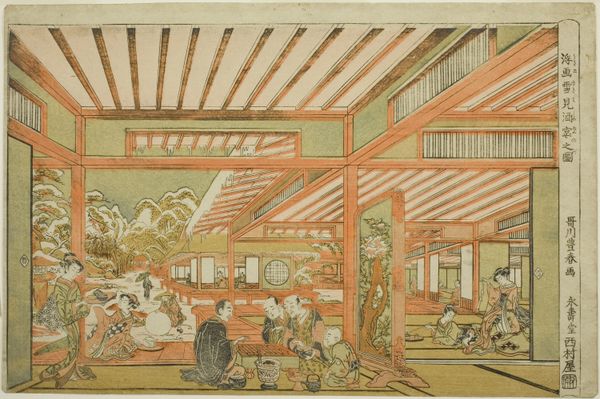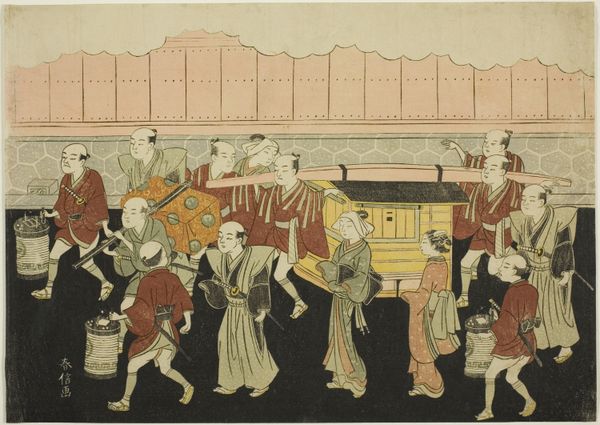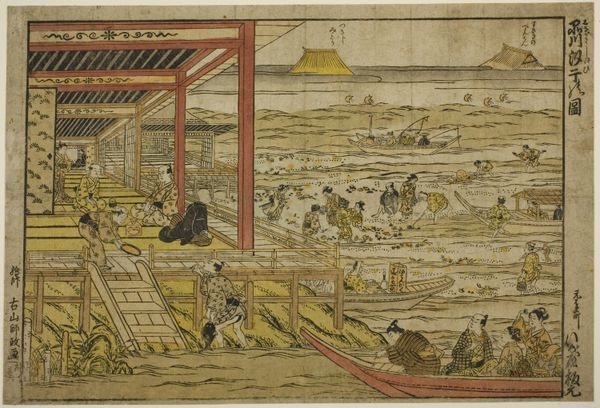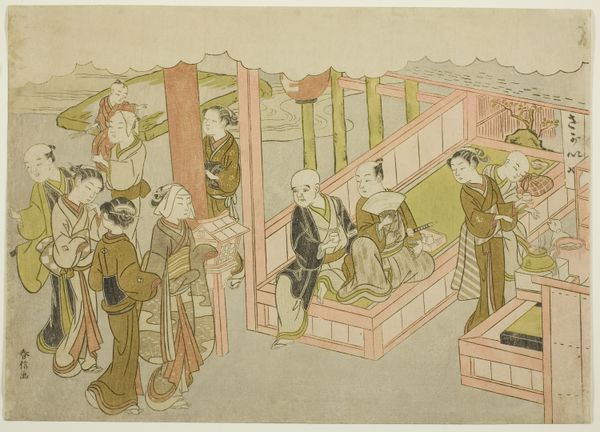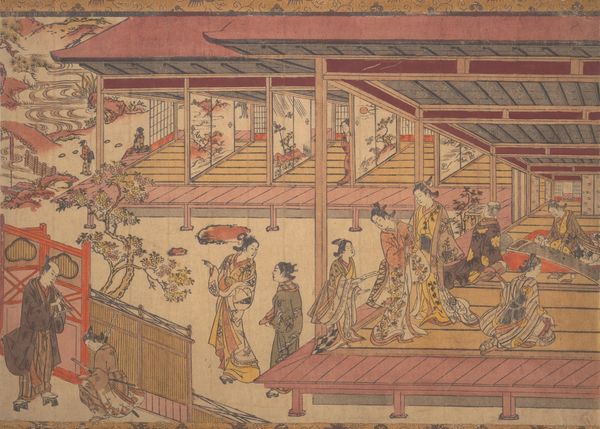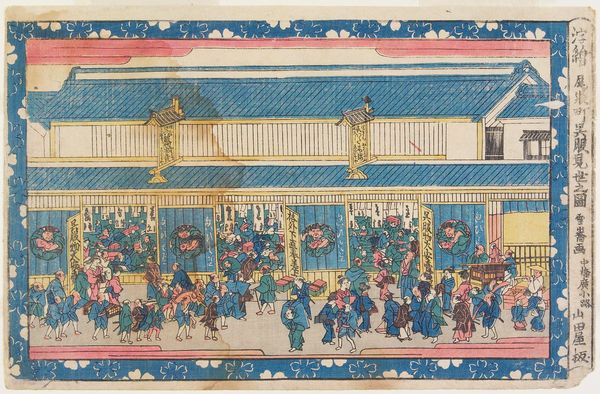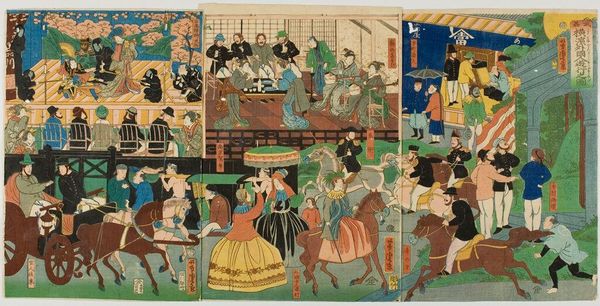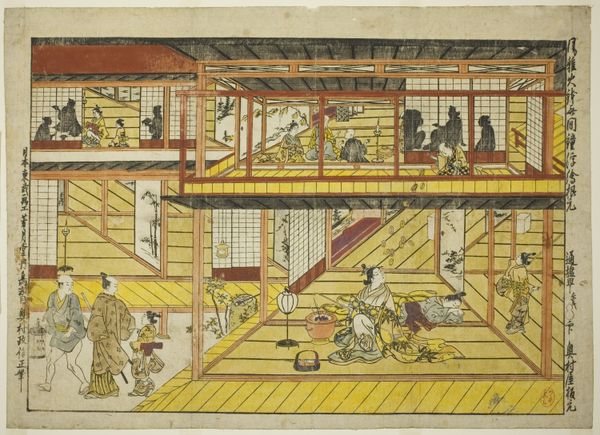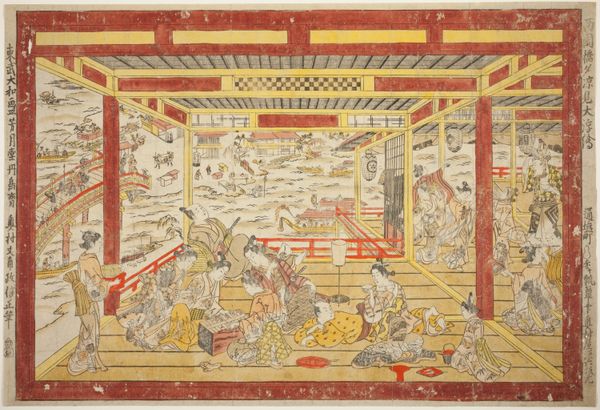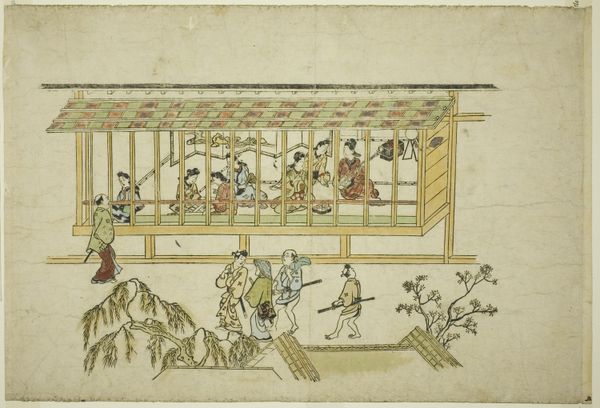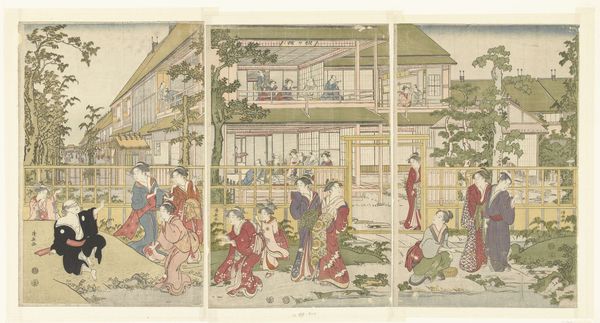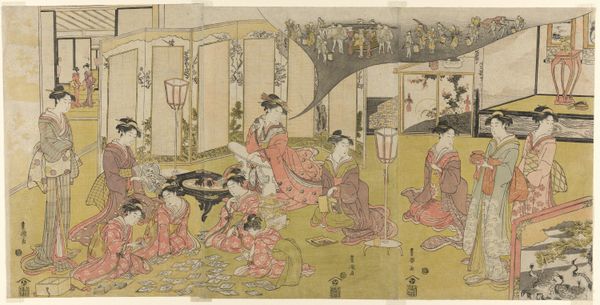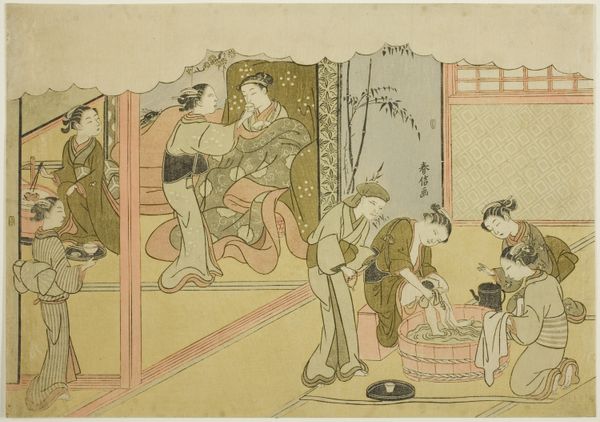
The Rain Shelter at Nii Hill by the Aji River, Osaka (Osaka Ajigawa Niiyama amayadori), from the series "Famous Places in Osaka: Fine Views of Mount Tenpo (Naniwa meisho Tenpozan shokei ichiran)" c. 1834
0:00
0:00
print, woodblock-print
# print
#
asian-art
#
landscape
#
ukiyo-e
#
woodblock-print
#
genre-painting
Dimensions: 25.3 × 36.8 cm
Copyright: Public Domain
This is a woodblock print by Yashima Gakutei, portraying a rain shelter along the Aji River in Osaka. Note the sheltering structure, seemingly offering respite, yet riddled with curious holes. Consider the symbolism of the 'hole' motif. Throughout history, the hole appears as a powerful, ambivalent symbol. In ancient cultures, holes were seen as entry points to the underworld, portals to the unknown. Yet, here, the holes are playful, inviting interaction, almost like peep-shows into a bustling world. This reminds me of similar apertures found in Renaissance garden follies, offering controlled glimpses of nature, altering one’s perception. The artist uses these holes to frame the everyday, to turn the act of observing into a conscious performance. Do these openings trigger a collective memory of primal curiosity? Perhaps the artist is tapping into our subconscious desire to peek behind the curtain, to penetrate the surface and discover what lies hidden. It reveals how symbols are not static, but dynamic entities, constantly reshaped by the currents of culture and psyche.
Comments
No comments
Be the first to comment and join the conversation on the ultimate creative platform.
